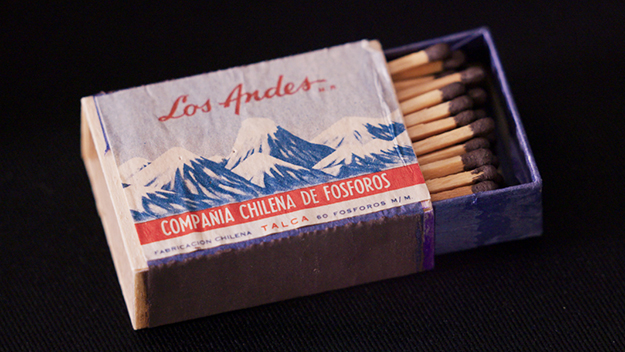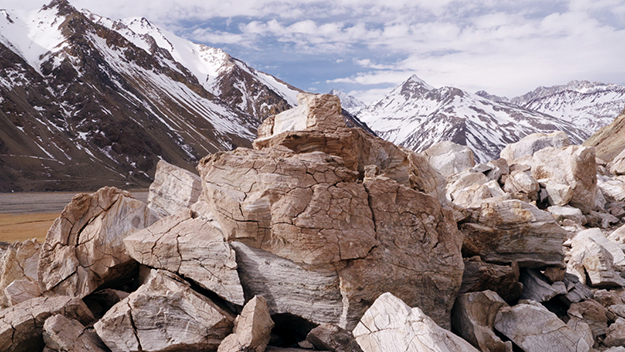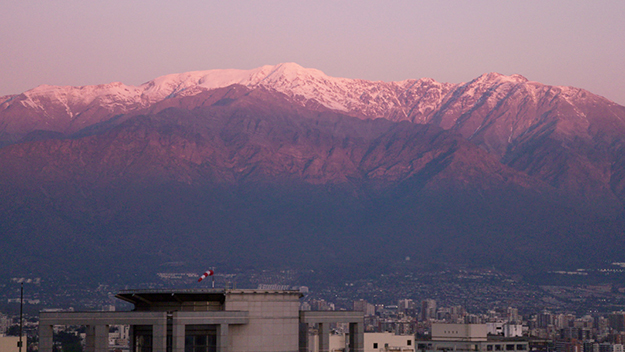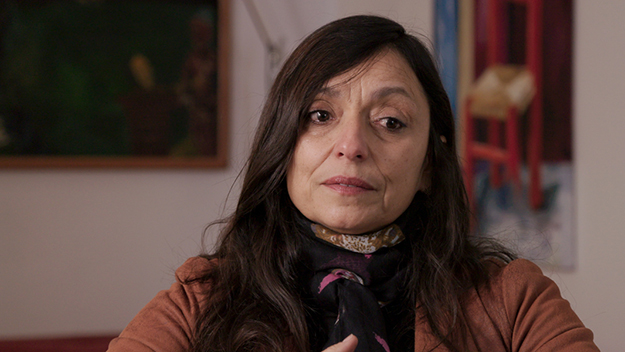Film of the Week: The Cordillera of Dreams

The Cordillera of Dreams (Patricio Guzmán, 2019)
Over the last decade, documentarist Patricio Guzmán has made films of remarkable beauty about subject matter of extreme ugliness. That ugliness is the brutality of the Pinochet dictatorship which held sway in Guzman’s native Chile between 1973 and 1990: the arrests, torture and executions, the psychic damage done to a generation, whether they stayed in their country or, like Guzmán and so many others, went into exile. The beauty lies in the metaphors that Guzmán has explored in his last three films, their elegance and aptness, and the graceful indirectness with which he leads us from the images that are his point of departure to the political anger and urge for redemption that are his ultimate themes. In Nostalgia for the Light (2010), Guzmán begins with the radio telescopes of Chile’s Atacama desert and a meditation on astronomy as a national fascination, then opens up a disquisition on the Pinochet years via the revelation that many families of the regime’s victims have spent years searching the desert for remains of their disappeared relatives. This was followed by The Pearl Button (2015), ostensibly about water and Chile’s coast, but then moving onto the long history of Chile’s exterminated indigenous peoples and later the fates, under Pinochet, of political prisoners dumped from planes into the sea.
In both these films, the bridge between beauty and horror—in Nostalgia, for example, between the distant stars and the bones of the dead, made from the same elemental matter—is Guzmán’s own contemplative Spanish-language commentary. It leads us through his associative arguments in one of cinema’s most captivating voices, with its gentle, incantatory, almost priestly tone. That voice is once again the connecting thread in The Cordillera of Dreams, the third in Guzman’s series of metaphysically inflected political essays on his native land. This time his central theme is the cordillera of the Andes, the long, wide mountain range that runs down the west of the South American continent, through Chile and six other countries. Aerial shots of astonishing beauty run through the film in slow flyovers of glaciers, gorges and waterfalls, while Guzmán’s interviewees—artists, writers, scientists—proffer their own thoughts on Chile’s stretch of the cordillera.
Many of the speakers—and this is perhaps a testimony to the Chilean spirit that Guzmán and others allude to—perceive the cordillera in strikingly poetic terms. Francisco Gazitua, one of two sculptors featured, enthuses about the gentleness of the mountain range, which he compares to the back of a chair. More abstractly, he also sees the cordillera as “a hallucination… the material of dreams…” For him, it’s also a labyrinth, and entering its landscape is “like being in a chest that contains everything.” The other sculptor, Vicente Gajardo, sees the cordillera as both “a mystery” and a “cultural landscape.” For singer Javiera Parra, it is a mother, but one that isolates Chile from the world, while for writer Jorge Paradit, it is “a sea that makes us an island,” engendering a national culture at once powerful and closed. For Alvaro Amigo, a journey in the mountains is a journey through time; Amigo is a volcanologist and time, and the phases of the earth’s development, is his business, illustrated here by stone walls with textures of melting wax. It should be said that, throughout, Guzmán and DP Samuel Lahu gather images that can hold their own against the majesty of David Attenborough’s natural history programmes, and arguably have the edge in their poetic purity and resistance to hyperbolic spectacle.

The film’s geo-mysticism is sharply undercut from the start, in two ways. One is through a very different image of the cordillera—a photorealist mural by Guillermo Muños Vera, which serves as a backdrop at a subway station in the Chilean capital Santiago. We see Muños working on one of these paintings brushstroke by brushstroke, but Guzmán also shows one of them on the platform, ignored by passing commuters—placing the mountains in the pointedly mundane perspective of modern Chilean urban reality. The other way is in Guzmán’s own comments on the mountains. When he was young, he tells us, and primarily concerned with left-wing politics, they never interested him at all: “the cordillera was not revolutionary.”
The director’s youth, we come to understand, ended on 11 September 1973, the day of Pinochet’s coup against Salvador Allende’s socialist government. Guzmán documented the lead-up to this national trauma in material that would become his formidable trilogy The Battle of Chile (1975–79). He was one of many who went into exile after the coup—in his case, not before being arrested and held prisoner among multitudes in the same football stadium where in 1962 Chile came third in the World Cup: “I remember perfectly this view of the scoreboard,” Guzmán says, revisiting the locale. Since his departure, Guzmán has lived abroad, but has devoted his life to making films about his country. However, his visits home have always been as an exile. Returning today, he says, feels like arriving “ in the distant past… Santiago receives me with indifference… I don’t recognize the city… I also don’t know who I am.” The state of exile is so much about a severed physical relation to a place that “the smells are different… they no longer resemble the air I used to breathe.”
Visiting his old Santiago neighborhood, Guzmán gives us a vertiginous shot that swoops up from the pavement to the sky to show the house of his childhood, now a hollowed-out shell covered in graffiti. He then shows us where he lived when working on The Battle of Chile, and when the coup happened. As befits his theme, he depicts the event in geological terms, as “a violent earthquake”—which leads to the film’s only forced image, of billowing volcanic smoke. His interviewees’ descriptions of the coup’s effects don’t need any metaphoric illustration, they are so horrifically to the point. Javiera Parra, a child at the time, recalls the anguish of the adults around her, and the insecurity this social tremor caused her generation; Alvaro Amigo, who was also a child, remembers hearing the thunder of military planes overhead. Francisco Gazitua, who spent four years under house arrest, remembers enduring frequent raids (“I didn’t have a lock on the door, because I knew they’d force it open”), often waking to find a gun to his neck.

Other extraordinary images are directly connected with the cordillera. One is an aerial view of a mysterious site, hollowed out in the mountain and ringed with roads, a place marked on no existing map: it is one of the many properties owned by foreign companies, which take the lion’s share of Chile’s copper. Then there are the trains which carry copper from the mountains to the coast, running to their own mysterious timetables past “villages with no names, home to invisible men and women… In Chile, what cannot be seen does not exist,” says Guzmán. Indeed, visibility is the key to this trilogy, beginning in Nostalgia with the unearthing of the unseen bodies in the Atacama desert, through The Pearl Button’s revelations about the drowned dead, to this film’s contention that the reality of Chile’s political and economic present remains unseen because it is so little talked about.
The film’s custodian of visibility is Pedro Salas, who has been shooting documentary footage in Chile since 1982. He has accrued a vast archive of material that, says Guzmán, “makes it impossible to erase history.” Salas’s aim has always been to capture images for Chileans to see since, he says, the outside world always knew what was happening in Chile, but his compatriots often didn’t; one of the contentions of the trilogy is that Chile as a nation is reluctant to look directly at the realities of the Pinochet years. Guzmán generously devotes a large chunk of his film to Salas’s footage, and what we see is shocking: police assaulting civilians with batons, water cannons blasting blasting anti-torture demonstrators. No less shocking is the fact that, while most of this footage comes from the Pinochet years, we also see Salas out filming today, with the riot police and the water cannons still out in force.
The political discussion is much more extensive and direct than in the last two films. The post-Pinochet government of the ’90s is held responsible for occulting the abuses of the past, depicting them not as crimes but as unfortunate aberrations, actions that merely “went too far.” More subtly, the film argues, the iniquities of the past caused a social rot that affects Chile today, in that the bureaucrats who brought neoliberal “Chicago-style” economics to the nation (we see Pinochet’s tower-block offices, now empty but still highly corporate-looking) laid the foundations of a system that, Guzman contends, have destroyed the traditional structures of Chilean society. Chile is friendly to foreign investment, says one commentator wryly, because it is “a stable country (with) no troublesome trade unions,” subject to the universal law of profitability above all.

The film contains much blunt talk and unvarnished footage of the brutal facts of modern Chilean history; from a discursive point of view, this makes for a compelling, indeed revelatory essay, but the downside is that, as a cinematic experience, The Cordillera of Dreams is considerably less rich and less imaginatively involving than the two preceding chapters. That is presumably a calculated decision on Guzmán’s part: to come down from their loftier climes to the hard surfaces of Santiago’s pavements, which have seen so much horror. But those pavements, we learn, are made of stones quarried in the cordillera, and are now studded with memorial plates for the dead of the Pinochet years. Guzmán may be holding back this time on the beauty—but that only makes the imagery stand out all the more eloquently when he does make a surprising connection between an idea and a picture, a fact and a texture. One sequence takes him to a breaker’s yard, where dead vehicles are piled up, prompting Guzmán’s comment that “everything Chile used to be was discarded.” In a close-up of one car’s distressed surface, the fine cracks form a network like a labyrinth of streets, the map of a ghost city which, as Paradit comments, Santiago itself has become—people now walking alone in crowds, Chile’s traditional social structures having broken down.
Those cracks were formed, for the nation and for Guzmán, on that seismic day in 1973, and one of the most moving aspects of The Cordillera of Dreams is the film-maker’s candour about the effect on his own life: “I’ve never spoken of the loneliness that’s stayed with me since (that day).” This profoundly sad film ends with a dream of redemption (“My wish is that Chile recovers its childhood”), a reference back to Nostalgia’s cosmic scope in close-ups of Andean meteorites, and a somewhat more than symbolic reversal of the shot in which Guzmán first showed us his ravaged childhood home. This latter image represents a simple act of correction, and a personal act of renewal: a quiet coup de cinema that completes one of modern documentary’s most eloquent acts of testimony.
Jonathan Romney is a contributing editor to Film Comment and writes the Film of the Week column. He is a member of the London Film Critics Circle.







